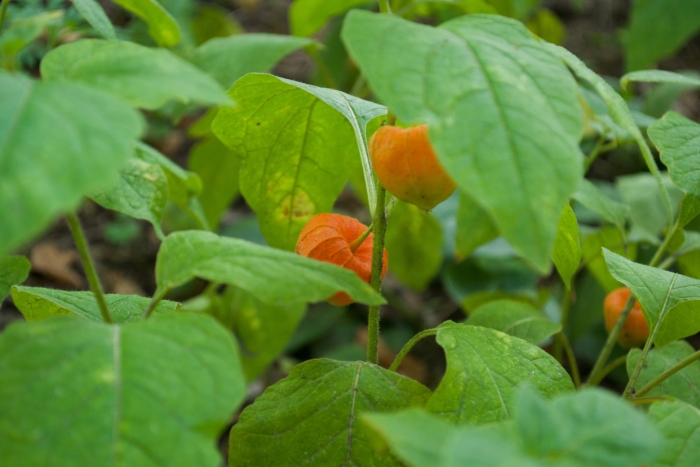Chinese Lantern
(Physalis alkekengi)
Chinese Lantern (Physalis alkekengi)
/
/

vpesnev
CC BY 4.0












































Estimated Native Range
Summary
Physalis alkekengi is valued for its ornamental qualities, particularly the showy lantern-like calyces that are often used in dried flower arrangements. It is hardy to below −20 °C (−4 °F) and thrives in full sun to part shade, in well-drained soil. While it is a popular ornamental plant in temperate regions, it requires careful management due to its wide-spreading root system that can be invasive, sending up new shoots some distance from the original planting. It is advisable to plant it in a contained area or use root barriers to prevent unwanted spread.CC BY-SA 4.0
Plant Description
- Plant Type: Herb
- Height: 1-2 feet
- Width: 1-2 feet
- Growth Rate: Rapid
- Flower Color: White
- Flowering Season: Summer
- Leaf Retention: Deciduous
Growth Requirements
- Sun: Full Sun, Part Shade
- Water: Medium
- Drainage: Slow, Medium, Fast
Common Uses
Bee Garden, Bird Garden, Butterfly Garden, Edible*Disclaimer: Easyscape's listed plant edibility is for informational use. Always verify the safety and proper identification of any plant before consumption., Potted Plant
Natural Habitat
native to grasslands, dunes, and open woodlands across Eurasia
Other Names
Common Names: Bladder Cherry, Chinese Lantern, Japanese-Lantern, Winter Cherry, Gewöhnliche Judenkirsche
Scientific Names: , Physalis alkekengi, Alkekengi officinarum, Physalis alkekengi var. alkekengi, Physalis franchetii var. bunyardii, Physalis sendtneri, Boberella alkekengi, Megista maxima, Physalis alkekengi subsp. anthoxantha, Physalis alkekengi var. anthoxantha
GBIF Accepted Name: Alkekengi officinarum Moench